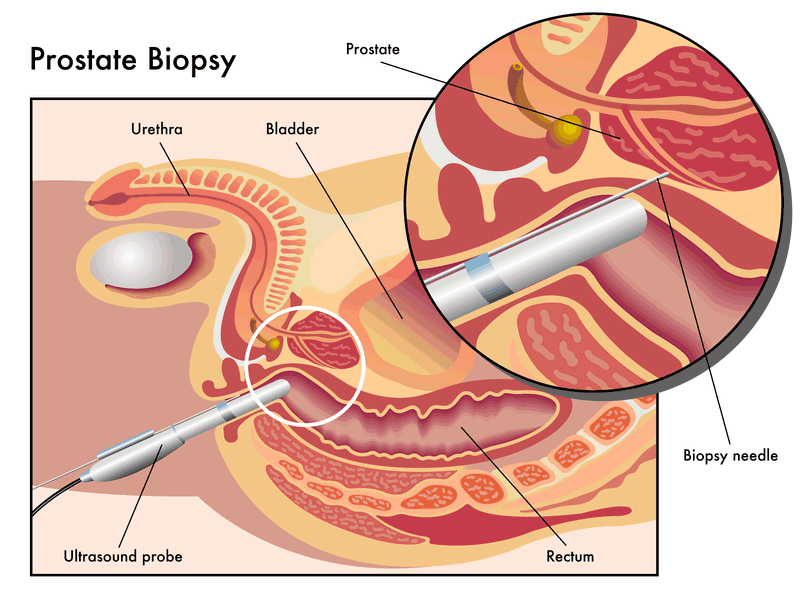The Medical Jargon for Three Types of Prostate Biopsy
Let's be clear. A prostate biopsy is used to diagnose cancer of the prostate gland. It is possible to have both benign prostatic hyperplasia (bph) and cancer. That would be unfortunate, but if your doctor suggests one of the procedures below, it may be for the purpose of eliminating a suspicion of cancer so that your symptoms can be managed best and without that worry.

Three things you must do to prepare for your needle biopsy.
- Wear old undies
- Empty your bladder, and
- Insist on general anaesthetic, if that's right for you!
I am absolutely serious about those three things.
However, if you are unable to empty your bladder fully, a urinary catheter will be put in place to make sure the baldder is empty.
General anaesthesia is not always a good option unless there are other reasons in your case, making it necessary for the prostate biopsy. There is always the possibility of more complication post-surgery with general anaesthesia than with local anaesthetic.
Now, before you agree to a prostate needle biopsy, learn about the type of procedure your doctor is recommending and why? Then, find the courage to ask 7 more questions before you book the date.
The three types of prostate health biopsy are:
• Transurethral
• Transrectal
• Transperineal
In this context ‘trans’ mean through. Through the urethra, the rectum or the perineum. The perineum is the space between the anus and the scrotum. Ouch, whichever way you choose.
1. Transurethral prostate biopsy
Can be done under local or general anaesthetic.
The urethra passes through the prostate gland, which is why you have urinary problems when the prostate swells. A lighted cystoscope passed into the urethra enables the doctor to see through the gland. The cystoscope has a small cutting loop attached to it and collects samples from the prostate through the urethra.
2. Transrectal ultrasound guided procedure (TRUS)
Also can be done under local or general anaesthetic.
A thumb sized ultrasound probe is inserted through the anus into the rectum. The probe measures the shape of the prostate and the images help guide the needle to the most likely infected places from which to take each biopsy. The rectum provides the easiest access to the prostate. However, you may be advised to clear out your colon with an enema to reduce the risk of infection from possible faecal matter in the rectum.
3. The transperineal prostate needle biopsy
Requires a general anaesthetic, so you need to book out the day or even overnight. Remember, as noted above, your perineum is the part of the body between the anus and the scrotum. An incision is made (that’s a cut in the perineal skin) in order to access the prostate for biopsy collection.
Now you know what type of prostate biopsy you might have, what about those seven questions I mentioned before? Click the link below to see if they have been answered?
Image credit : Rob3000 @ dreamstime.com
Part 1 - (this page)
Part 2 - Seven important questions
Part 3 - One final question and decision time.
back to home page




